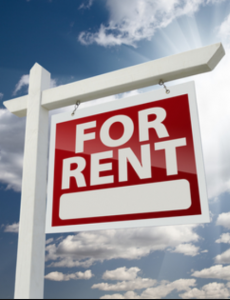Renting – smooth the search for a climate-proof hometown
Relocating is a big step.
Renting can break it into two – or more – steps.
 Four hurricanes have hit the US coast in the past six weeks. Over 10% of the country’s population was affected by Harvey and Irma. Many more were hit by Nate in Mississippi and Maria in Puerto Rico. Will these storms finally trigger the exodus from coastal states predicted in a recent study?
Four hurricanes have hit the US coast in the past six weeks. Over 10% of the country’s population was affected by Harvey and Irma. Many more were hit by Nate in Mississippi and Maria in Puerto Rico. Will these storms finally trigger the exodus from coastal states predicted in a recent study?
A few straws in the wind: Google searches for “US migration” have tripled since early summer; for “Climate best places” they’ve doubled over the past year. A growing number of Americans seem to be thinking about moving to somewhere with a better hometown climate rating. If you’re one of them, you probably face the process with dread. Finding a new community, new jobs, and new schools; leaving friends and family; selling and buying homes – the many tasks are daunting. And all that change at one time could easily make the emotional pain worse than the physical and financial effort.
Consider doing what my wife and I have done. Our city is in the crosshairs of multiple climate threats, led by sea level rise, storm surge, and the huge resulting financial strains on municipal, business and residents’ finances. We don’t want to be here to watch the neighborhoods we love erode physically and economically. So we’ve taken the first two steps, 1) selling our home in the flood plain and 2) moving to a rented apartment downtown. We’ve made ourselves and our savings mobile.
We didn’t leave our friends; in fact, now that we live in a more lively neighborhood we have more friends. And we didn’t lose money. Yes, our old property is worth more since we sold it, but the proceeds from its sale went into the stock market, and those dollars are worth more today than if they’d stayed tied up in our home. [This phenomenon is far more common than most people think. Check the section on home investments in my book or read Professor Sinai’s advice on buying versus renting. Renting has huge advantages both in financial returns and in flexibility.]
So selling, then renting nearby, were the first steps in our slow relocation to a more climate-proof town. Next steps for us and many others would include
3) visiting and researching places that have a good hometown climate rating from Climate-Proof’s Where-To-Live Scorecards to identify the place we’d like to move to – eventually.
4) looking for jobs and schools as well, with time to find the right fit and make the transition without missing a paycheck or semester;
5a) before moving, maybe buying land or a rental property in our target climate-proof town. It will be a decent investment if others like us start thinking of moving there. And if we really like the property, we’ll have a place to live when we do decide to move;
5b) or moving to a rented home in the climate-proof town. Again, renting buys us time to be sure it’s where we want to put down roots and, if so, to look around for the right property to buy.
6) eventually buying a new home and settling permanently in our new climate-proof hometown.
Yes, this scheme relies on For Rent signs and calls for two or three separate moves instead of one. But those moves can come years apart, reducing stress and increasing the likelihood that we’ll end up where we really want to be.

